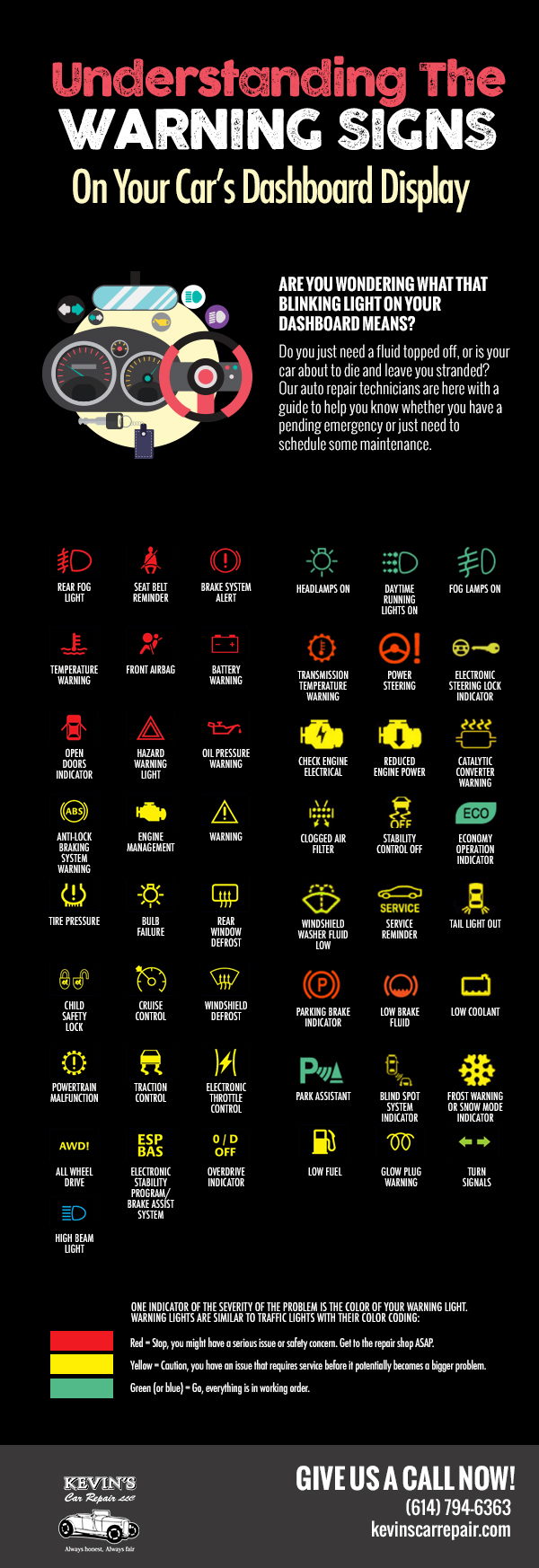Wondering Regarding The Meaning Behind Those Dashboard Warning Lights? Gain Understandings Right Into Their Effects For Your Vehicle'S Safety And Upkeep
Wondering Regarding The Meaning Behind Those Dashboard Warning Lights? Gain Understandings Right Into Their Effects For Your Vehicle'S Safety And Upkeep
Blog Article
Content Written By-Termansen Alvarado
When you're behind the wheel, those glowing warning lights on your control panel can be a bit bewildering. Do you recognize what they're trying to tell you about your auto's health and wellness? Recognizing the significance of these lights is important for your security and the longevity of your automobile. So, the next time one of those lights turns up, wouldn't you wish to decipher its message properly and take the essential actions to address it?
Common Warning Lights and Interpretations
Recognize typical warning lights in your cars and truck and recognize their significances to make certain safe driving.
The most typical warning lights consist of the check engine light, which signifies concerns with the engine or emissions system. If this light comes on, it's critical to have your automobile checked without delay.
The oil stress cautioning light shows reduced oil pressure, calling for immediate interest to avoid engine damages.
A blinking battery light may suggest a defective billing system, possibly leaving you stranded if not addressed.
The tire pressure tracking system (TPMS) light signals you to reduced tire stress, impacting lorry security and fuel performance. Neglecting this could cause hazardous driving problems.
The abdominal muscle light suggests an issue with the anti-lock stopping system, jeopardizing your capacity to stop swiftly in emergency situations.
Finally, the coolant temperature warning light warns of engine getting too hot, which can result in extreme damages otherwise dealt with quickly.
Comprehending these typical caution lights will certainly help you resolve concerns immediately and preserve safe driving problems.
Value of Prompt Interest
Understanding the common caution lights in your car is just the first step; the significance of without delay addressing these warnings can't be stressed enough to ensure your security on the road.
When a warning light illuminates on your control panel, it's your automobile's method of connecting a prospective concern that requires focus. Ignoring these warnings can lead to much more serious troubles later on, compromising your safety and security and possibly costing you extra in repairs.
Trigger interest to cautioning lights can protect against failures and crashes. For example, a flashing check engine light can indicate a misfire that, if left unattended, could cause damage to the catalytic converter. Addressing this promptly can conserve you from a pricey repair.
Similarly, a brake system alerting light may signify low brake liquid or used brake pads, vital components for your security when driving.
Do It Yourself Troubleshooting Tips
If you notice a caution light on your control panel, there are a couple of do it yourself troubleshooting ideas you can attempt prior to seeking specialist aid.
https://www.cnbc.com/2022/03/18/ev-mechanic-carl-medlock-found-a-niche-fixing-teslas-.html is to consult your auto's handbook to recognize what the specific caution light suggests. Often https://erickjdytm.is-blog.com/36282786/witness-the-remarkable-rebirth-of-a-disregarded-lorry-highlighting-the-remarkable-efficiency-of-knowledgeable-outlining-methods-it-makes-sure-to-take-your-breath-away can be as straightforward as a loose gas cap activating the check engine light. Tightening up the gas cap might deal with the problem.
An additional usual concern is a low battery, which can activate various cautioning lights. Inspecting the battery connections for corrosion and ensuring they're protected may take care of the issue.
If a caution light continues, you can attempt resetting it by detaching the car's battery for a couple of minutes and afterwards reconnecting it. Additionally, examining your vehicle's fluid levels, such as oil, coolant, and brake fluid, can aid repair cautioning lights related to these systems.
Conclusion
Finally, understanding your automobile's caution lights is crucial for maintaining your lorry running efficiently and securely. By quickly attending to these notifies and recognizing what they imply, you can avoid expensive repair work and potential failures.
Keep in mind to consult your vehicle's guidebook for certain information on each warning light and take action appropriately to ensure a hassle-free driving experience.
Stay informed, remain safe when traveling!
